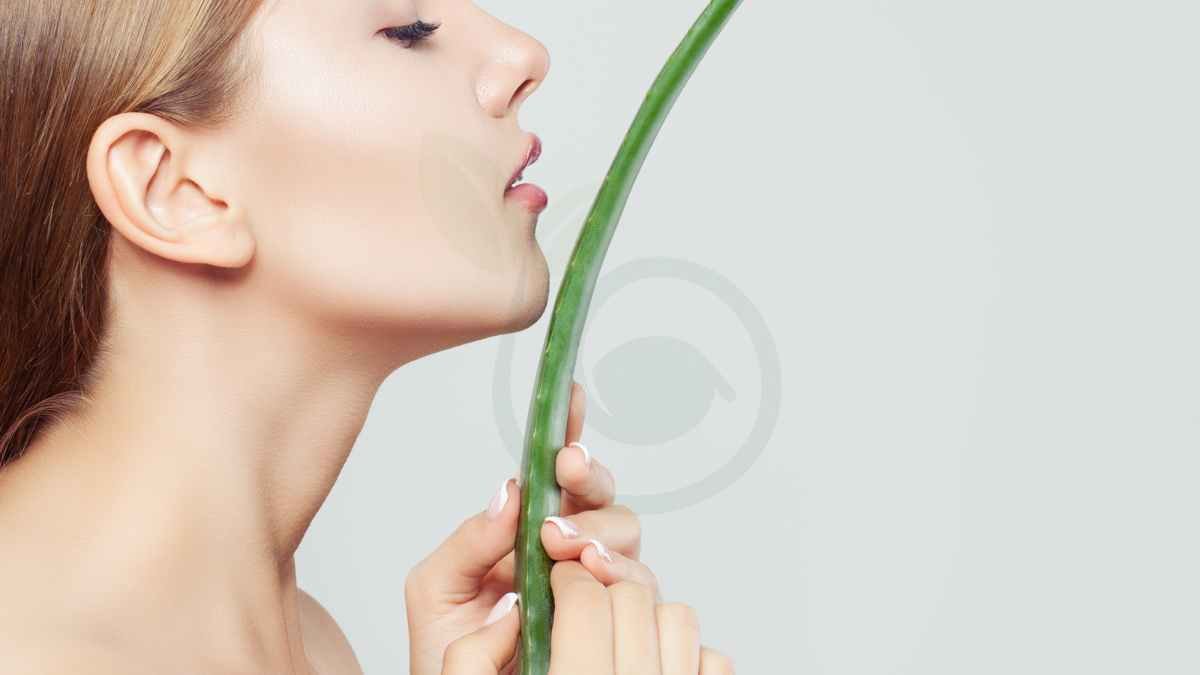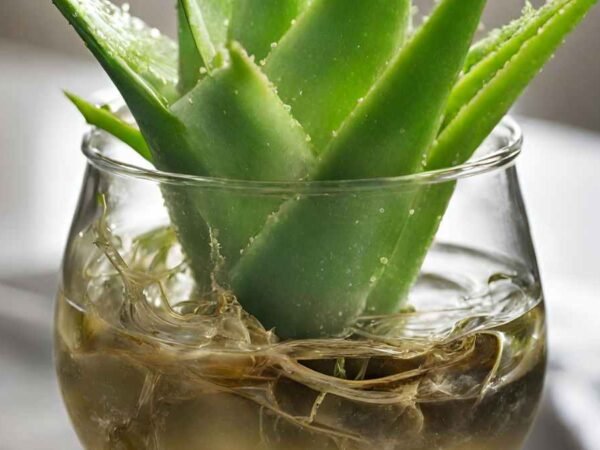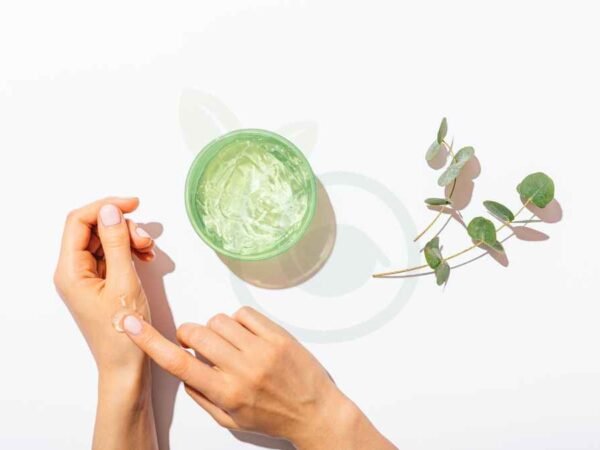Did you know that aloe vera can work wonders for your skin, moisturize, and help with acne breakouts? From soothing sunburns to hydrating dry patches, this natural plant is a skincare superstar. But how long should you leave it on your face for maximum benefits? Finding the sweet spot between too little and too much time can make all the difference. In this post, we'll dive into the optimal duration to keep aloe vera on your face to unleash its full potential.
Whether you're a skincare enthusiast or just looking to elevate your routine with natural remedies, understanding the ideal application time of aloe vera is key. Let's explore the magic of this plant and learn how to make the most of its skincare benefits.
Key Takeaways
- Use aloe vera on your face for about 15-20 minutes: Apply a thin layer of aloe vera gel on your face and leave it on for 15-20 minutes before rinsing it off with water.
- Ensure the purity of aloe vera gel: Opt for organic, pure aloe vera gel without added chemicals or fragrances for maximum benefits.
- Perform a patch test before regular use: Test a small amount of aloe vera gel on a small area of your skin to check for any adverse reactions before applying it to your entire face.
- Customize aloe vera application based on skin type: Adjust the frequency and duration of aloe vera use according to your skin's sensitivity and needs.
- Consult a dermatologist for personalized advice: If you experience any negative reactions or uncertainties, seek guidance from a dermatologist to tailor aloe vera application to your specific skin concerns.
- Incorporate aloe vera into your skincare routine mindfully: Combine aloe vera with other gentle skincare products and practices for a well-rounded and effective skincare regimen.
Understanding Aloe Vera
Aloe Vera Basics
Aloe vera, a succulent plant known for its healing properties, has been used for centuries. Originating from the Arabian Peninsula, it thrives in dry climates. This plant's gel-like substance is rich in vitamins, minerals, and antioxidants.
The versatility of aloe vera is evident in the various forms it comes in - gel, juice, powder, and supplements. Each form offers unique benefits for skincare and haircare. The gel is commonly used topically for soothing burns and moisturizing the skin.
Aloe vera is a powerhouse when it comes to skincare. Its anti-inflammatory and antimicrobial properties make it ideal for treating acne, sunburns, and dry skin conditions. Aloe vera promotes collagen production, aiding in skin elasticity and reducing wrinkles.
Skin Benefits
Using aloe vera on the skin can work wonders due to its hydrating and cooling effects. The gel penetrates deep into the skin layers, providing moisture without clogging pores. It also soothes irritations, making it perfect for sensitive or sun-exposed skin.
For those struggling with dry or irritated skin conditions like eczema or psoriasis, aloe vera offers relief by reducing inflammation and redness. Regular use of aloe vera can improve overall skin health by nourishing cells and promoting regeneration.
Hair Advantages
Incorporating aloe vera into your hair care routine can lead to stronger and healthier locks. Aloe vera's enzymes repair dead skin cells on the scalp while its proteolytic enzymes stimulate hair growth. This succulent also acts as a natural conditioner that leaves hair smooth and shiny.
When applied to the scalp, aloe vera helps balance pH levels and control excess oil production. This promotes scalp health by preventing dandruff and itchiness. The plant's keratolic action breaks down sebum buildup on the scalp, supporting overall hair health.
Pure Gel vs Mixed Products
Choosing between pure aloe vera gel and products containing aloe vera depends on your specific needs. Pure gel offers concentrated benefits with minimal additives but may have a shorter shelf life compared to commercial products. On the other hand, mixed products like shampoos or lotions may contain additional beneficial ingredients but could be less potent in terms of aloe vera content.
Consider using pure aloe vera gel for targeted treatments like sunburns or acne spots where high potency is essential. However, mixed products provide convenience for daily use but may dilute the effectiveness of pure aloe vera extract.
Using Aloe on the Face
Application Tips
Proper application of aloe vera on the face is crucial for maximizing its benefits. Start by cleansing your face with a gentle face wash to remove dirt and impurities. Next, scoop out fresh aloe vera gel or use a trusted face product containing aloe.
To ensure even distribution, gently massage the aloe vera onto your skin in circular motions. This helps in absorbing the gel effectively and promotes better skin hydration. Remember to be gentle, especially around sensitive areas like the eyes.
Ideal Duration
Determining the ideal duration to keep aloe vera on your face is essential for optimal results. It is generally recommended to leave the gel on for about 10-15 minutes before rinsing it off with lukewarm water. This timeframe allows the skin to benefit from aloe vera's nutrients without causing any adverse effects.
Rinsing off aloe vera after the specified time helps prevent any potential irritation or dryness that may occur with prolonged exposure. The duration of application plays a significant role in maintaining skin health and preventing any unwanted reactions.
Skin Type Considerations
Different skin types may react differently to aloe vera, emphasizing the importance of considering your specific skin type before use. For those with oily skin, aloe vera can help control excess oil production and prevent acne breakouts. Individuals with dry skin can benefit from its hydrating properties, promoting moisture retention.
Adjusting the frequency and amount of aloe vera used based on your skin type is key to achieving desired results. Sensitive skin types should perform a patch test before full application to ensure compatibility and avoid any potential allergic reactions.
Condition Specific Use
Aloe vera can be tailored to address various skin conditions due to its versatile nature. It offers targeted benefits such as soothing inflammation for acne-prone skin or reducing redness for sensitive skin types. Customizing how you use aloe vera based on individual needs can enhance its effectiveness in treating specific skin concerns.
Understanding how different conditions can benefit from aloe vera's properties allows for personalized skincare routines that cater to unique requirements. By incorporating aloe vera into your skincare regimen strategically, you can harness its healing and nourishing effects for healthier-looking skin.
Maximizing Aloe Vera Benefits
Frequency of Use
Using aloe vera on the face regularly can yield optimal results. It's recommended to apply aloe vera twice daily, in the morning and evening. This frequency allows for consistent hydration and nourishment for the skin.
To strike the right balance, avoid overusing aloe vera as it can lead to skin irritation. If you have sensitive skin, start with once daily application and monitor how your skin reacts before increasing usage.
Incorporating aloe vera into your skincare routine effectively involves cleaning your face before application. Gently massage the aloe vera gel onto your face in circular motions until fully absorbed.
Complementary Skin Care
Aloe vera serves as an excellent complement to other skincare products due to its soothing and hydrating properties. When combined with ingredients like hyaluronic acid, it enhances moisture retention, promoting plump and supple skin.
The synergy between aloe vera and different skincare ingredients is remarkable. Pairing aloe vera with tea tree oil can create a potent acne-fighting blend, reducing inflammation and preventing breakouts effectively.
For enhanced results, consider combining aloe vera with other products like serums or moisturizers. This combination can boost the overall efficacy of your skincare routine, addressing multiple skin concerns simultaneously.
Night vs Day Application
Applying aloe vera at night allows for deeper penetration into the skin while you sleep, aiding in cell regeneration and repair. The gel soothes any irritations from daily exposure to environmental aggressors.
During the day, using aloe vera provides a protective barrier against pollutants and UV rays. Its cooling effect helps to calm any redness or inflammation, making it an ideal addition to your morning skincare regimen.
Recognizing Risks
Signs of Overuse
Prolonged use of aloe vera on the face can lead to skin irritation, redness, and dryness. It may also cause allergic reactions like itching, hives, or a rash if used excessively. To avoid these issues, it's crucial to observe your skin's reaction after each application. If you notice any persistent adverse effects, it's best to discontinue use immediately.
Potential Side Effects
Aloe vera, when left on the face for too long, can result in photosensitivity, making your skin more prone to sunburn. This heightened sensitivity can lead to sun damage and increase the risk of premature aging. Moreover, some individuals may experience contact dermatitis from prolonged aloe vera exposure. It's essential to be aware of these potential side effects and take necessary precautions.
When to Avoid Aloe
Individuals with sensitive skin, a history of allergies, or existing skin conditions like eczema should be cautious with aloe vera. If you have open wounds or cuts on your face, it's advisable to avoid applying aloe vera directly as it may cause irritation. Furthermore, if you are using certain medications or undergoing specific treatments like chemotherapy, consult a healthcare professional before using aloe vera topically. Being mindful of these factors can help prevent any adverse reactions and ensure the safety of your skincare routine.
Tailoring Aloe Use
Adjusting for Skin Type
When it comes to adjusting aloe vera use based on skin type, it's crucial to consider individual needs. For oily skin, aloe vera can help regulate oil production and prevent acne breakouts. Those with dry skin may benefit from aloe's hydrating properties, soothing irritation and locking in moisture.
- Oily skin: Aloe vera regulates oil production.
- Dry skin: Aloe vera hydrates, soothes, and locks in moisture.
People with sensitive skin should perform a patch test before applying aloe vera to the face. For combination skin, using aloe vera as a spot treatment on dry areas can balance out the skin.
Addressing Skin Conditions
Aloe vera is renowned for its ability to address various skin conditions. It can help reduce inflammation for individuals with acne-prone skin. The plant's antimicrobial properties make it effective against bacterial infections, promoting faster healing of wounds and blemishes.
- Reducing inflammation in acne-prone skin.
- Fighting bacterial infections for quicker healing.
For individuals with sunburn, applying a thin layer of aloe vera gel can provide instant relief by cooling the skin and reducing redness. Those dealing with eczema may find comfort in using aloe vera due to its gentle, soothing nature on irritated skin.
Customizing Duration
Customizing the duration of aloe vera application depends on the intended purpose. For general skincare maintenance, leaving a thin layer of aloe gel overnight can deeply hydrate the face while you sleep. However, if targeting specific concerns like acne or sunburn, applying a thicker layer for 20-30 minutes before rinsing off may yield better results.
- General skincare maintenance: Leave a thin layer overnight.
- Targeting specific concerns like acne: Apply thick layer for 20-30 minutes.
Individuals looking to incorporate aloe vera into their daily routine can mix it with other skincare products like moisturizers or serums for added benefits. By customizing how long you keep aloe vera on your face, you can maximize its effectiveness based on your unique skincare needs.
Avoiding Adverse Reactions
Identifying Allergies
Allergies to aloe vera may manifest as redness, itching, or swelling on the skin. Identify any potential allergies by performing a patch test before applying aloe vera.
- Redness
- Itching
- Swelling
Perform a patch test by applying a small amount of aloe vera gel on your inner arm and waiting for 24 hours to observe any adverse reactions. If no reaction occurs, it's likely safe to use on your face.
Patch Testing Importance
Patch testing is crucial as it helps determine if your skin is sensitive or allergic to aloe vera. This simple step can prevent potential irritation or adverse reactions on your face.
- Determine skin sensitivity
- Prevent irritation
- Avoid adverse reactions
By conducting a patch test, you can ensure that the aloe vera gel does not cause any harm to your facial skin, allowing you to enjoy its benefits without any negative consequences.
Proper Removal Techniques
When using aloe vera on your face, it's essential to know the proper techniques for removing it. Gently cleanse your face with lukewarm water and a mild cleanser to eliminate all traces of aloe vera residue.
Proper removal:
- Cleanse gently with lukewarm water.
- Use a mild cleanser.
- Ensure no residue remains.
Leaving aloe vera on your face for an extended period can lead to clogged pores and potential skin issues. Therefore, thorough removal is key in maintaining clear and healthy skin.
Expert Tips and Tricks
Enhancing Absorption
To enhance absorption of aloe vera, apply a thin layer to clean skin and gently massage in. This helps the skin absorb the gel effectively. Allow it to dry before moving on to other skincare products.
Applying aloe vera after cleansing ensures maximum penetration into the skin. The moisture from the fresh gel can hydrate and nourish the skin deeply. For best results, leave it on overnight to soothe and rejuvenate your skin.
- Apply a thin layer
- Massage gently
- Allow to dry before adding other products
Layering with Other Products
When using aloe vera with other skincare products, layer it appropriately. After cleansing, apply toner, then follow with aloe vera gel. Finish your routine with moisturizer to seal in the benefits of aloe vera.
Aloe vera can act as a primer for makeup application. Its hydrating properties create a smooth base for foundation. Remember not to use too much product to prevent pilling under makeup.
- Cleanse your face
- Apply toner
- Follow with aloe vera gel
- Finish with moisturizer
Seasonal Adjustments
In hot weather, store your aloe vera gel in the refrigerator for an extra cooling effect on the skin. The chilled gel can help reduce redness and inflammation caused by sun exposure or heat.
During colder months, mix a few drops of aloe vera with your regular moisturizer for added hydration. This adjustment can prevent dryness and flakiness that often occur in winter.
- Store gel in the refrigerator in summer
- Mix with moisturizer in winter for added hydration
Common Questions Answered
Best Time for Application
Aloe vera gel is most effective when applied overnight to allow maximum absorption into the skin. Applying it before bed ensures deep hydration through the night.
- Overnight application allows aloe vera's healing properties to work continuously, promoting skin repair and rejuvenation.
- For those with oily skin, applying a thin layer of aloe vera in the morning can help control excess oil production throughout the day.
Long-term Use Effects
Regular use of aloe vera on the face can lead to improved skin texture, reduced acne scars, and enhanced overall skin health.
- Over time, aloe vera's anti-inflammatory properties can help soothe irritated skin and reduce redness.
- Continued use may also promote collagen production, leading to firmer and more youthful-looking skin.
Mixing with Other Ingredients
When mixing aloe vera with other ingredients for facial application, ensure compatibility to maximize benefits.
- A combination of aloe vera and honey creates a powerful blend for moisturizing and brightening the skin.
- Mixing aloe vera with tea tree oil can be effective for combating acne due to its antibacterial properties.
Final Remarks
You now have a solid grasp of how to utilize aloe vera on your face effectively. By understanding its benefits, risks, and tailored usage, you can maximize its potential while avoiding adverse reactions. Remember to follow expert tips and tricks to make the most out of this natural remedy.
Continue exploring the wonders of aloe vera on your face and share your newfound knowledge with others. Experiment with different methods and products to find what works best for you. Your skin will thank you for the care and attention you provide. Stay informed, stay glowing!
Frequently Asked Questions
How long should I keep aloe vera on my face?
Aloe vera can be left on the face for 10-15 minutes before rinsing it off with lukewarm water. Leaving it longer may cause dryness or irritation.
Can aloe vera be used daily on the face?
Yes, aloe vera is safe for daily use on the face. Its soothing properties can help hydrate and calm the skin, making it suitable for regular use.
Is fresh aloe better than store-bought gels for the face?
Fresh aloe vera gel is preferred as it contains more active nutrients. However, reputable store-bought gels with high aloe content can also be effective.
Can aloe vera help with acne-prone skin?
Aloe vera has anti-inflammatory and antibacterial properties that can help reduce acne inflammation and redness. It may also aid in soothing irritated skin.
Should I perform a patch test before using aloe on my face?
It's recommended to do a patch test on a small area of your skin to check for any adverse reactions before applying aloe vera to your entire face.
Image Source: Paid image from CANVA





